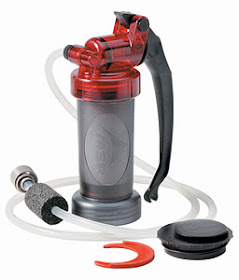The League began in Morden, a suburb of London in 1923. Henry Amos raised a protest against rabbit coursing, he was successful in motivating support and managed to achieve a ban. This encouraged him to organise opposition to other forms of cruel sports and so in along with Ernest Bell, he established the League for the Prohibition of Cruel Sports. Although many blood sports such as bull, bear and badger baiting and cock fighting had already been outlawed at the timethe laws only applied to domestic and captive animals. With the RSPCA unwilling to take action against hunting, Amos and Bell identified a clear need for an organisation which would campaign against what it classified as cruel sports. (
citation)
Originally called the League for the Prohibition of Cruel Sports, the partnership between Henry Amos and Ernest Bell did not last long. The organization had 500 members in 1927, and not many more when, in 1932, Bell left the organization due to a difference in tactics. Bell went on to found the National Society for the Abolition of Cruel Sports (NSACS).
LACS (now called "The League") struggled through World War II, its already small membership depleted by the war effort. In 1956, journalist Eric Hemmingway -- an avid hunt disrupter -- was elected Chairman, and by 1960 LACS (it now calls itself "the League") had a more radical image and a larger support base. (
citation)
Hemmingway died in 1963, and was succceed by Raymond Rowley. In 1975, after the anti-coursing bill failed, there was an increasing level of disent with the League as to the course and direction the organization should take. In March of 1977, Richard Course, a former hunt saboteur and a member of the Executive Committee of the League, was charged with receiving documents stolen from the British Field Sports Society. This theft did not slow Course's rise within the League, however, and in 1981 Course was made Executive Director and Mark Davies became Chair. (
citation)
In 1982, League member Mrs. Janet Simmonds won a High Court case against the League over an £80,000 gift the organization made to the Labour party in 1979. The judge ruled the donation invalid and that it had to be repaid back with interest. (
citation)
In 1982, The London Times revealed that League Press officer Mike Wilkins was actually the convicted grave desecrater Michael Huskisson who had previously set up the Cambridge group of the Hunt Saboteurs Association. (
citation citation ) Huskinson was subsequently fired from his League job after he joined the South East Animal Liberation League in sacking the offices of the Royal College of Surgeons (RCS) offices at Buxton Brown Farm, Downe, Kent. Huskinson was sentenced to prison for eighteen months for his role in the vandalism and theft of documents (
citation).
In the late 1980s, League Executive Director Richard Course was appointed to the Burns Inquiry into hunting with dogs and began to spend some field time with the mounted fox hunts as an outgrowth of this work. After a period of time talking with professional wildife managers, scientists, and hunt supporters, he finally concluded that: "The dogs easily outpace the fox within a minute or two and kill it within a second or two. How the fox is located is totally irrelevant to animal welfare considerations," and he began to say to publicly.
Course was fired from the League for expressing this and other sentiments divergent from the League's mission. What followed was a period of turmoil and bitter accusations within various factions of the League. James Barington assumed Course's position within the League (still widely known as LACS), but he too eventually quit the organization saying that he too had concluded that an absolute ban on hunting was not in the best interests of animal welfare.
Graham Sirl and John Bryant then took over as Joint Chief Officers of the the League, but this partnership did not last long as Bryant quit over the sale of some of the League's wildlife sanctuaries to pay costs associated with political campaigns.
On February 18, 2001,
The Sunday Telegraph (
citation) reported that Andrew Wasley, the League's press officer, had previously been arrested for violent disorder at Hillgrove Farm cat breeding centre, where he was one of the balaclava-wearing saboteurs. Wasley was sentenced to three months' imprisonment for his actions. (
citation)
In May of 2001 Graham Sirl resigned his position in the League (some say he was fired) and said that he no longer believed a complete ban on hunting was in the best interests of wildlife, and was especially not in the best interests of the Exmoor deer herds which would quickly overpopulate the area if left unmanaged. Sirl says, "I now believe hunting with hounds plays an integral part in the management system of deer on Exmoor and the Quantocks." (
citation)
LACS went through more leadership turmoil in 2001 and 2002 until, in January of 2003, actress Annette Crosbie was named President. In a January 10, 2003 inteview with David Edwards, Crosbie told
The Mirror (
citation) : "When I think about it, I think humans are the nastiest species of animal on the planet ...". In the same interview she describes herself as "
impatient, intolerant, judgmental, tactless -- I'm not very nice, I'm really not. And if you don't do it my way, by God you'll be sorry."Supporters of Crosbie say her personaality is one of the things that makes her an ideal choice to lead the League.


























